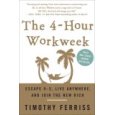If we all had this much enthusiasm for our businesses there wouldn’t be a recession.
Thanks to Jim McGee for the link.
If we all had this much enthusiasm for our businesses there wouldn’t be a recession.
Thanks to Jim McGee for the link.
I just read about the new book, Solving America’s Health Care Crisis by Dan Perrin and Pat Rooney, in the Downsize DC newsletter. Downsize DC is an organization with principles of downsizing government and personal responsibility that I support. So I went to Amazon to check out the reader reviews. The book is new – released May 2 – so there aren’t a lot, but all eight of them are 5-star ratings.
I’ll be checking this out. Health care in the US clearly needs an overhaul, and Euro-style social medicine is equally clearly not a useful answer. Government never, ever, runs anything like health care (or education, welfare, or anything else) effectively, instead creating an ever-growing bureaucracy that produces less and less for more and more dollars. Hopefully Perrin and Rooney and provided a roadmap to a system that gets people the health care they need with the proper incentives to keep costs under control.
 Got a new book over the holidays – “The 4-hour Workweek” by Timothy Ferris. One of my consulting colleagues recommended it a few weeks ago as being a good source for tips and ideas for some of the areas I’ve been investigating as a sideline the past few years. I love the book. I read most of it on a 2-hour flight from Atlanta to San Antonio, so it’s clearly a fast read. But it’s also a practical book, containing specific and usable ideas and recommendations in the areas of personal automation, personal outsourcing, product development, and removing yourself as a bottleneck.
Got a new book over the holidays – “The 4-hour Workweek” by Timothy Ferris. One of my consulting colleagues recommended it a few weeks ago as being a good source for tips and ideas for some of the areas I’ve been investigating as a sideline the past few years. I love the book. I read most of it on a 2-hour flight from Atlanta to San Antonio, so it’s clearly a fast read. But it’s also a practical book, containing specific and usable ideas and recommendations in the areas of personal automation, personal outsourcing, product development, and removing yourself as a bottleneck.
This is what I call a “connector” or gap-filling book. I think you have to be at a certain point in your thinking on these areas in order for it to resonate with you. I’ve spent more time than I care to admit thinking about and poking around the edges of this stuff and made very little progress. I’ve read numerous books on time management and internet marketing and product development and PPC advertising and such. I’ve conducted a few of my own experiments. I’ve tried to find assistants and sources for doing tasks that are necessary but burdensome and low priority for me. But it just never worked like I wanted. There was never a serviceable “big picture” I could latch onto and I never got that mental “click” that happens when a concept gels in your mind and you can begin to make it your own. I don’t know why this is so hard in some things and so easy in others, but I’ve learned to keep striving for that “click” and I know it when I feel it.
“4-hour Workweek” was a constant stream of little connections and examples that fit together to form a proper big picture, such that things which previously seemed isolated and disconnected are now linked in an overall vision. This is important for me as I have no energy for pursuing small things, no matter their potential, when I can’t see a clear contribution to a the bigger goal.
I don’t have any interest in copying Ferris’ global vagabond lifestyle. But his approach to creating a low-pressure, low-risk, low-involvement business structure is compelling – especially if you have already been struggling to do many of the things he discusses. If you haven’t, Ferris’ claims may seem like just so much additional BS in a world already filled with it. But I don’t think they are. My goal for 2008 is to implement as many of Ferris’ strategies as possible, starting with the identification and outsourcing of my “boat-anchor” tasks and moving up to higher-level functions such as product design, marketing, etc. I will outsource as much of this as possible, and catalog my progress and failures here. It will be nice to have a theme for blog entries again.
 Last Christmas (aka National Retailers Holiday) I received this lovely Charbroil Cast Iron Fireplace as a gift. I’ve never used it because, well, because I had to build a patio for it first – you can’t set something like that just anywhere. I had to make a suitably safe spot for it. But this year I did that and as the weather is cooling off I decided to set it up Monday night.
Last Christmas (aka National Retailers Holiday) I received this lovely Charbroil Cast Iron Fireplace as a gift. I’ve never used it because, well, because I had to build a patio for it first – you can’t set something like that just anywhere. I had to make a suitably safe spot for it. But this year I did that and as the weather is cooling off I decided to set it up Monday night.
I don’t have a wood-burning fireplace in my house, nor any need for firewood, so last night I stopped at the local grocery and picked up a couple of bundles of firewood to test it out – supposedly only the finest hardwoods, seasoned for even burning. Two bundles for $8. Such a deal. How hard could it be, right?
I mean, I’ve watched Bear Grylls start a fire in the middle of freakin’ nowhere, using nothing more than two stones and a tiny handful of dead grass. But not me, no sir. I bought asbestos firewood. I bought the only two bundles of flame-proof hardwood on the planet. I used newspapers, dried twigs and straw, chipped off small bits for kindling. It all burned and then died.
I got a pint of lighter fluid ($3.49 and another trip to the corner market) and soaked everything good and tried again. The fluid flamed up, burned off and died. I used the entire pint of fluid to keep everything burning. I fanned the flames, I readjusted the logs, I turned them and blew on them and squirted more lighter fluid. It was like some scene from “Jackass, The Movie” with me about to be blown up. But nothing.
I finally went to the shop and got a blow torch. I used an entire can of MAPP gas. You can weld metal with this stuff, but it wouldn’t set those goddamn logs on fire. By this time I’d spent more than an hour and a half trying to light this fire. I had a firepit full of ash, carbonized twigs, newspaper, and soot – and four sooty, impervious, defiant logs staring at me.
I finally broke down and went, again, to the store. I bought a case of those ready-made, artificial, fireplace logs – the kind made from sawdust and some sort of slow-burning organic glue that holds it all together. All you do is set the wrapper on fire on walk away and it burns merrily for 3-4 hours.
I put two of them in the firepit and arranged the satanic logs over, under and around them. Then I set the wrappers on fire. In short order I had a blazing little bonfire in my fireplace. It was 11:30pm. I now had to stay up another four hours, until it burned itself out, before I could safely go to bed. I wasn’t about to douse this damn fire.
Yet another growing list of evidence that there is little actual difference in what we westerners call “moderate” islam and “radical” islam – there are merely varying degrees of apathy that determine the level of action.
An interview with Ayaan Hirsi Ali in the November issue of Reason magazine. My favorite quote is her closing statement:
But I don’t even think that the trouble is Islam. The trouble is the West, because in the West there’s this notion that we are invincible and that everyone will modernize anyway, and that what we are seeing now in Muslim countries is a craving for respect. Or it’s poverty, or it’s caused by colonization.
The Western mind-set — that if we respect them, they’re going to respect us, that if we indulge and appease and condone and so on, the problem will go away — is delusional. The problem is not going to go away. Confront it, or it’s only going to get bigger.
This is old news by now and my source is not impeccable, but I asked the question a few days ago, “Who sold the rights for commercial use of Led Zeppelin’s music to Cadillac?”
Apparently, Robert Plant and Led Zeppelin did. Scroll down this Led Zep tribute site and you’ll see news photos of Plant at Cadillac’s 100th Anniversary celebration.
I’m shocked. Shocked, I say.
Guess all that money from the ’70s ran out. But it says something interesting that they still control their music, unlike the Beatles and lots of other musicians. Good for them.
Don’t be alarmed now.
It’s just a spring clean for the May Queen.”
Just what the hell does that mean? I’ve wondered for more than 30 years.
But my real questions is, if Zep really still owns the rights to their music who sold Cadillac the rights to use it in their commercials?
From Rock Gods to Ringtones
Posted by Alan Wexelblat
As you’ve no doubt seen by now, the remaining members of Led Zeppelin have finally agreed to release their complete collection on iTunes, along with a special purchase item that bundles all 141 tunes. Verizon Wireless will also be offering Zep ringtones.
The band has famously refused most prior commercial uses of their music, with one amusing exception: Jack Black begged them for the rights to use “Immigrant Song”.
If a truth is ugly and inconvenient, is it still a truth?
If a truth is offensive to you or might hurt someone’s feelings is it still a truth?
If you just don’t like a truth, does pretending it’s false make it untrue?